Sorting Out HiRes Sample Tracks
If you’re trying to show off a new piece of hardware or confirm that high-resolution music is “not irrelevant”, what source material should you use? Imagine you work at a high-end audio shop or even at a Magnolia area inside a Best Buy store and have one shot at playing a track that will impress a potential customer, which CD would you pull out of your carrying case? Or perhaps you’re getting ready to release a new portable high-resolution player or Smartphone and want to bundle some examples of high-resolution audio files…again what choices do you have to make that perfect first impression?
Many years ago, I worked with some friends at Creative Labs, the maker of sound cards and computer peripherals. They made the original SoundBlaster cards. And they sold millions of them. Whenever the PC platform improved, Creative would upgrade their cards moving from 8-bits to 16-bits to 24-bits within the span of 5 years or so. One of their sound cards was the Audigy II card. It was notable because it could decode MLP (Meridian Lossless Packing), the format used to get 6 channels of full range high-resolution audio on a DVD-Audio disc. The Creative folks wanted to bundle a DVD-Audio disc of real high-resolution music inside the Audigy II box.
Figure 1 – The Creative Labs AIX bundle DVD-Audio disc for the Audigy II card.
You can imagine how pleased I was to be the sole supplier of the content that was included on that sampler. They could have reached out to the major labels but the price of each disc would be too expensive AND the hassle factor with labels and artists would have been unmanageable. My stuff was cheap, easy and, most importantly of all, it was really high-resolution.
A reader pointed me in the direction of the Audiogon/Chesky Sampler, a collaboration that seeks to impress with a collection of Chesky tracks. There are about 15 tracks. Half of them are prepared using Binaural+ processing (a binaural methodology) and the other half are other high-resolution tracks. The sampler is available for just under $5, so I downloaded the tracks at 192 kHz//24-bits (they are also offered at 96/24 and 44.1/16).
Now I know David and his brother Norman and know that they’ve built a terrific reputation for high-quality recordings…heck, they’ve been nominated for Grammys and I haven’t so I tread lightly here. But in looking at these tracks (I auditioned and plotted all of them), I have to wonder why these are regarded as wonderful examples of high-resolution content? Take a look at the spectrograms of a couple of the tracks (one binaural and one regular):
Figure 2 – St. Louis Blues Binaural+ track from Audiogon/Chesky sampler. [Click to enlarge]
Figure 3 – Full Moon over Istanbul track from Audiogon/Chesky sampler. [Click to enlarge]
If you’ve been following the posts on this site for any time at all, you know that I’ve referred to the “purple haze” on occasion. This is the telltale high frequency noise that happens with 1-bit DSD encoding. In the “St. Louis Blues” track, the level of noise in the ultrasonic range is so loud that it registers a “red” amplitude. Do you really want you electronics and speakers to get this noise? You might notice as well that there are 19 clipped samples in this “demo” track.
The rest of the tracks are about the same…ultrasonic noise indicative of 1-bit DSD recording and some low pass filtering. It’s hard to understand why these tracks would be selected for a demo collection.
And then there are a couple of tracks that I offloaded from a portable high-resolution player. Take a look at these:
Figure 4 – A classical track available in the HD-Audio area of a portable player. [Click to enlarge]
The same ultrasonic noise is very apparent. The track’s volume is quite low, there’s limited dynamic range and the sound of the track is very distant and diffuse. I would shy away from using a track like this to show off the fidelity of my new device.
Here’s a pop tune from the same device.
Figure 5 – A song by a major rock star featuring another female star. [Click to enlarge]
This one is notable because it’s CD spec…not high-resolution at all…even by the lukewarm standards/definitions that are emerging from various committees. It is also heavily mastered…just look at the peaks in the amplitude display. I understand that including a “name” artist on the device is important but with the money that being spent on promotion and such, creating a real high-resolution audio track of a major artist would not be that difficult.
So how are we supposed to get excited when we hear this new “revolutionary” high-resolution audio played back on innovative new hardware platforms when the material that is chosen to show off the new gear doesn’t meet the standards of the new devices?
In the FTP site, there are spectrograms of each of the samples. Take a listen AND take a look…I believe that AIX Records’ PCM recordings of jazz, vocal, classical and acoustic guitars would make much better demo materials than the stuff that I’m seeing and hearing.
I’m not saying that my tracks are flawless…I know of a few clipped samples and some errant “banding” from HVAC systems in the recording room…but they do stand up against any samples I’ve checked lately.

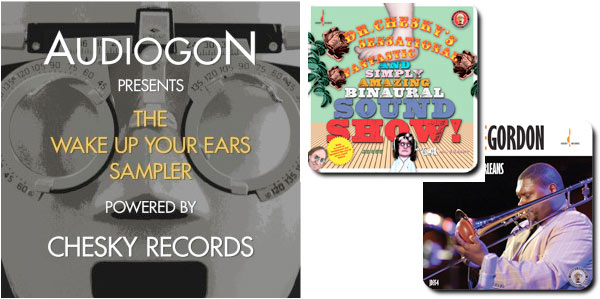
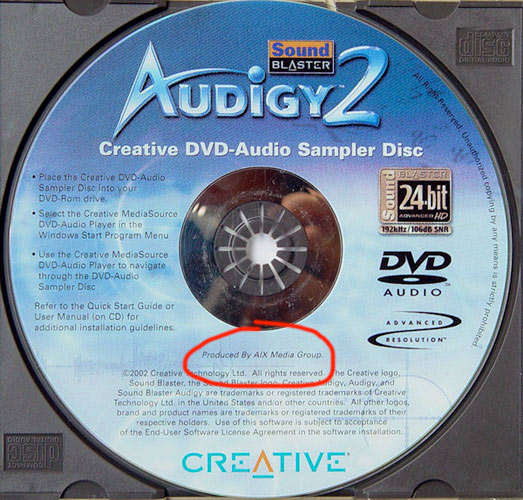
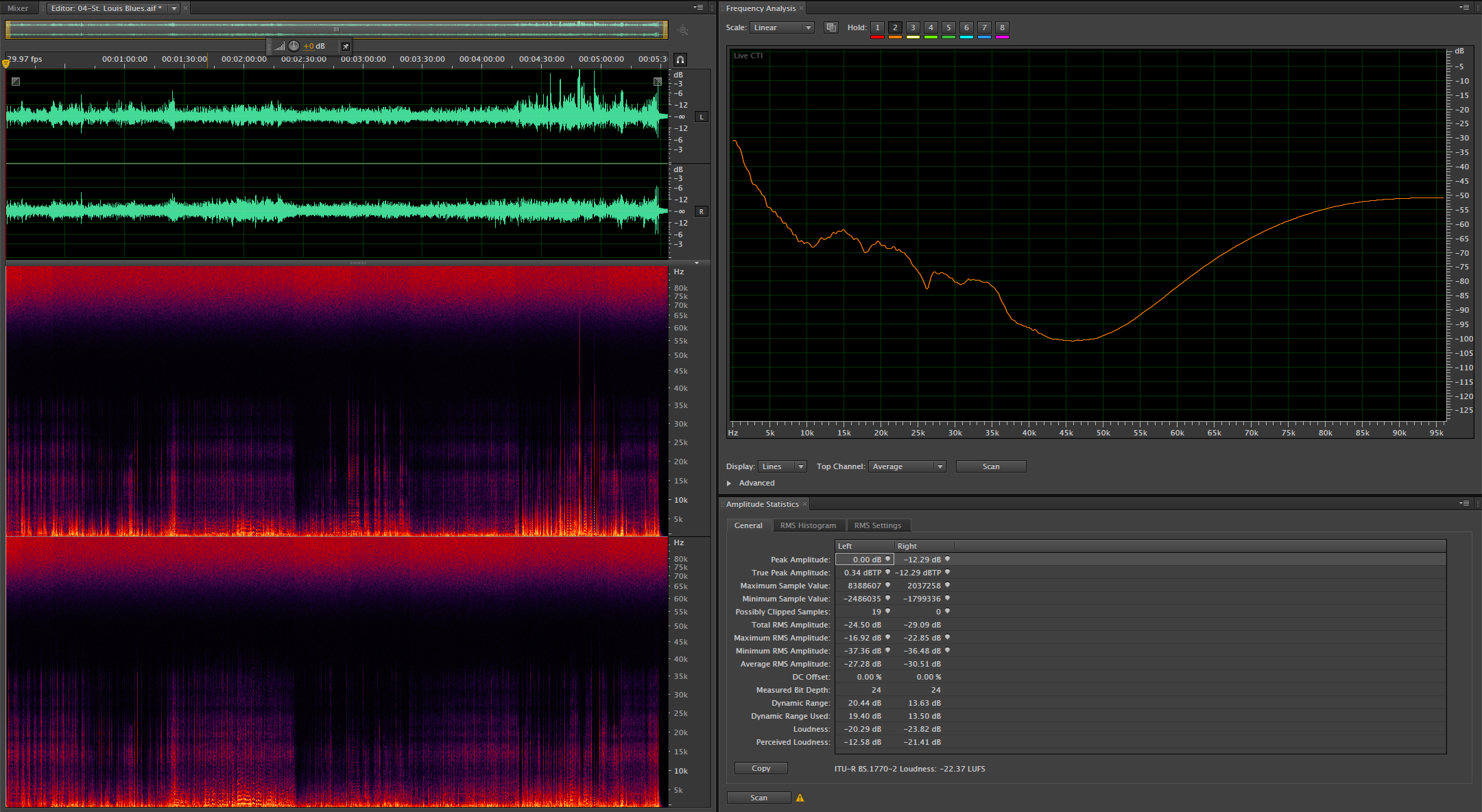
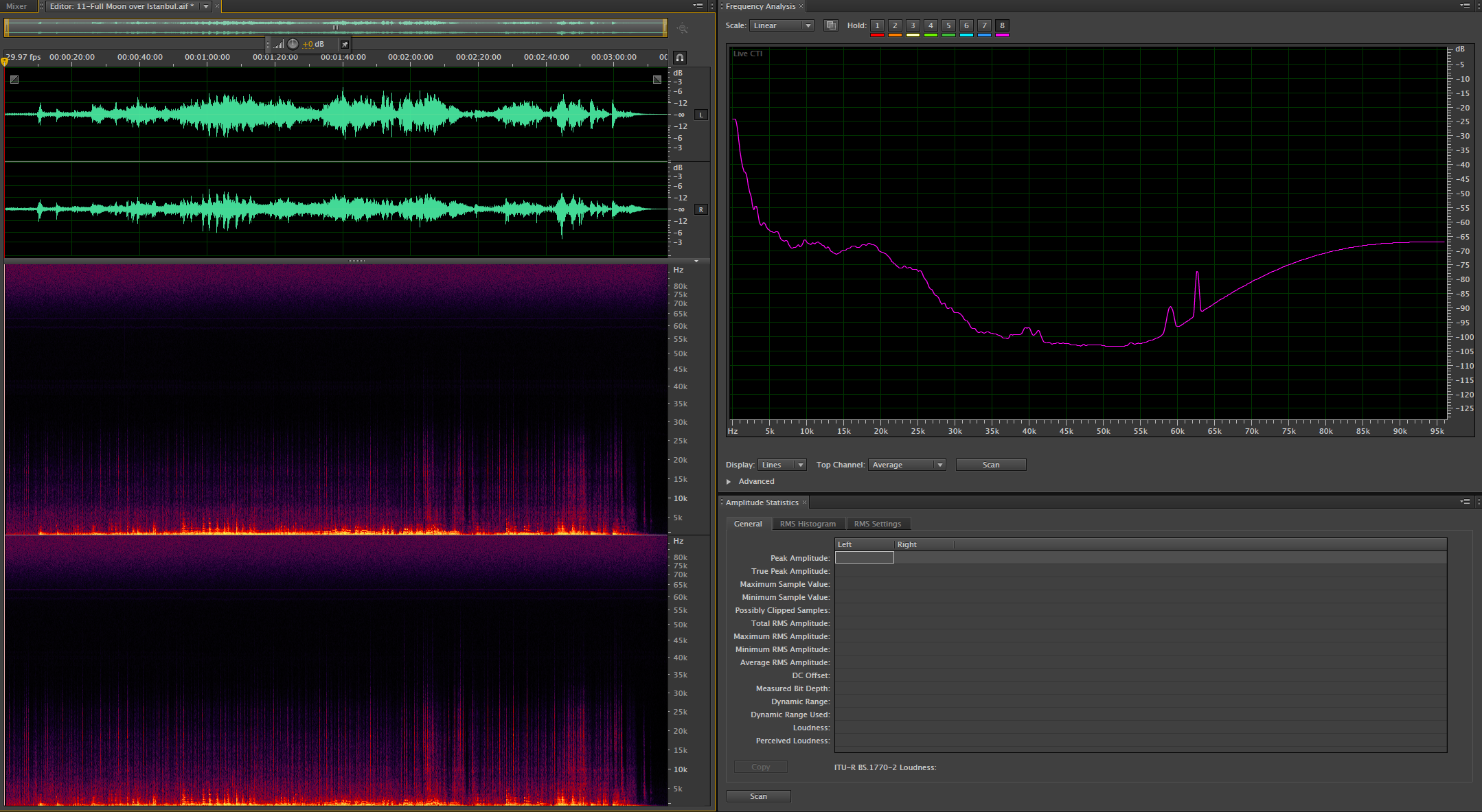
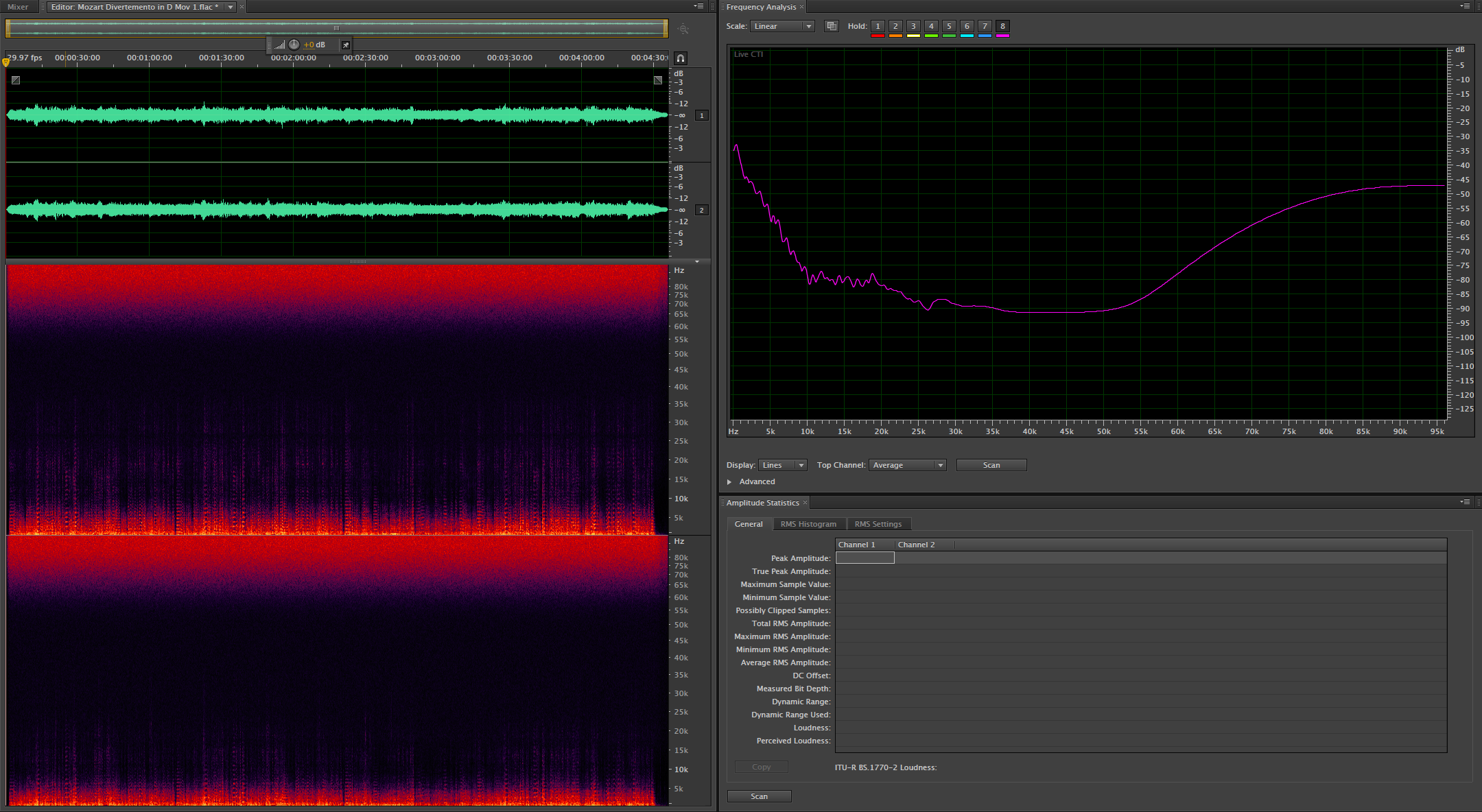
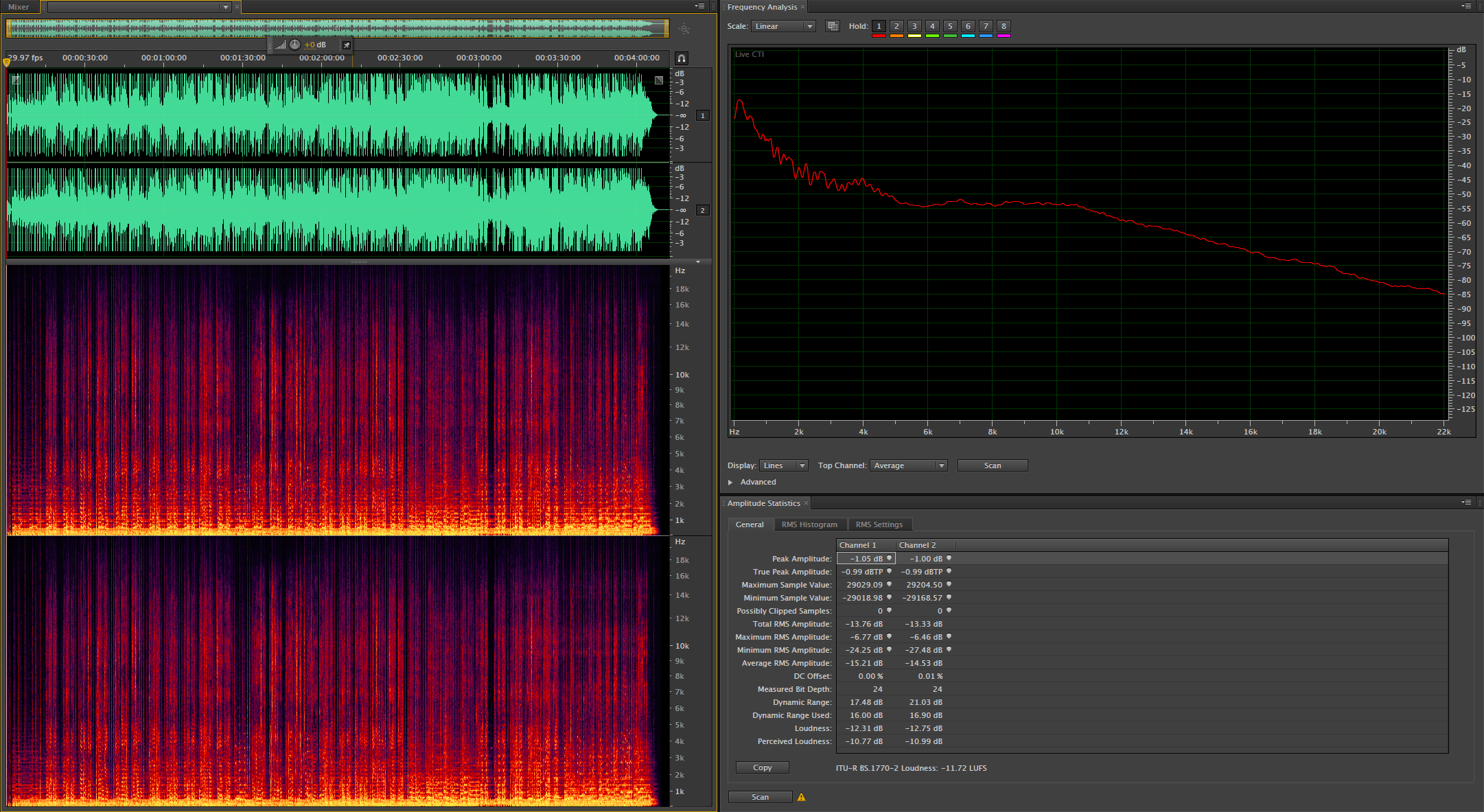
I hate to be a pessimist, but it looks like the only way to make sure of the TECHNICAL pedigree of a recording is to do a spectrum analysis of the digital file.
That’s not something most labels are about to provide since their ‘weighted-average’ customer wouldn’t understand it’s significance and probably doesn’t care. Maybe we need a modified scheme similar to the old ‘AAD’ ‘DDD’ type designations to certify that the files are digitally pure? It would have to be simple since most music consumers are too!
There is a current effort to do just this. Stay tuned for about an announcement in about a month.
I wore out my AIX sampler disc a few years ago. My current go to track is Elton John Captain Fantastic and the Brown Dirt Cowboy. Multi channel SACD. I’m sure it’s not the best but it gets the customers wallets out more often than not.
Thanks Mark
Tom Grooms
Tom…you can always get another one.
It looks to me like the noise doesn’t start rising until about 45 kHz. If 1-bit, the sample clock is running at 5.6 MHz (double rate DSD), but the rise looks too gradual. It could be a multi-bit converter running at 2.8 MHz or 3 MHz. You wouldn’t even see it in the 96 kHz file.
I think they bit doubled a DSD 64 track in the PCM domain to get to 192 kHz. In any case, this is NOT what you want to play as a proper demonstration of high-resolution audio.
Hey Dr.
Just thought I’d chime in on this one as it hits close to home. I built my first HTPC back in the early 2000’s using an Audigy card and then up to an Audigy 2, I remember that DVD, funny huh. I still use this setup to listen to my DVD-audio collection. Also the Audiogon sampler is the reason for the purple haze email request a couple days ago, they just sent me another email update that it was available although I had already had downloaded it a couple months ago. was getting ready to go back and repost but I saw you had beat me to it. My Discus handle is “governedbypolitics” by the way. see trying to keep up
You’ve probably got a collectors piece in the Audigy 2 DVD-Audio bundle. I’m not sure I could find one here in my own shop.
I only use to test a new setup something I know by heart. It’s really difficult to start a process that is ultimately perceptual, with scientific tools. Of course, because of what I do, I have access to them, but when I try a new DAC or amp, or speakers I always look for the perception my senses present to the brain. For instance, today I can use “Mosaic” to evaluate a system. But, most of the time, I use Chris Jones’ Roadhaouses & Automobiles (Stockfish Records CD 44.1/16) or my old Chesky’s sampler.
I did the same tests in Audition today and… yes, some tracks look bad, but even to seasoned musicians and producers… sound good, very good, indeed.
So… yes and no. We have a long way to go to lead the uninitiated into what hi-def audio is, and a long way to go to make it comercially meaningful. 99% of music consumers will never even entertain the idea of reading what are the specs of the track they’re downloading (I guess that’s the only forseeable future)… they’ll go for the best sound, and if we don’t have a universal understanding on these specs… we’re on for a long fight!
Thanks Carlos. I listened to the Chesky tracks at length and find them lacking…for my personal taste. The balance is off and they are too distant sounding. I understand that they are a flavor but the use of only two microphones requires the balance to be established at the time of the session. I’ve know musicians that recorded for Chesky and sometimes the people are very far apart because of the balance issue. That results in different “proxmities” or presence for each instrument…very disconcerting for these ears. And the DSD thing is a non-starter for me…especially as they are then converted to PCM for mixing, editing and ultimately distribution.
Hi, Mark… I wasn’t referring to the DSD releases of Stockfish. I was talking about the normal CD. I don’t know how it was recorded but, to my ears it’s as hi-def as hi-def should be. I haven’t processed the tracks yet… I’ll let you know and send along the results.
Mark, lets not omit the bigger issue here. i too have the fiio x3 and x5. the chesky tracks sound great (despite these ultrasonic noise issues) bc of ghe art head (binaural) recordings – nice natural out of the head when listened via headphones. my headphones dont mind ultrasonics, neither do most except perhaps electrostats. most tracks also have very little compression. the resolution is typically a trivial issue imho compared to the microphone setup used and this is a great example of it. natural out of head sound via headphones requires either binaural setups or DSP (dolby headphones, Smyth Realizer convolver, etc).
Having done my Ph.D. work on binaural audio, I don’t find the Chesky tracks persuasive in getting out of the head. They just sound hollow and distant. That’s my taste. I prefer to take surround mixes and process them as Headphones[xi]
thanks mark, what was your thesis? have you done psychophysics? it d be interesting to get peoples out of the head ratings for the chesky binaural recordings. our ratings for some reason would differ a lot. your pinnae may differ from the chesky head more than mine. such interindividual differences ought to be acknowledged. i bet you have additional interesting suggestions. the great thing about the smyth realizer is that it measures your own hrtf, this in contrast to art head, dolby headphones, etc. cant beat your own hrtf…have you tried it ? i own one and can vouch for it. great weekend, justus verhagen (phd neuroscience)
Justus…I graduated from UCLA with a doctorate in Music Composition. My dissertation involved using a binarual head to capture natural environmental sounds. The Smyth Realizer is the best of the bunch…I have one and the company routinely uses my room to do their measurements.
I’d be very interested in your thoughts about using an MRI machines or brainwaves to detect the perceptibility of ultrasonic frequencies. I met with another reader in San Jose last week and he mentioned that his college roommate invented a way to test hearing in babies by observing their brainwaves. Might be another way to get to the bottom of the debate over the 20-20 kHz standard.
hey mark, interesting, so what hypothesis did you test or method did you explore?
regarding ultrasonics, i tried to carefully replicate some psychophysics ( kunchur) on audibilty of >20k harmonics in young students. they tested normally threshold wise. They coulndt detect ultrasonics (neither can i) that kunchur claimed his subjects readily could. i exactly replicated his stimuli using pro tucker-davis auditory equipment and stax phones , i am very doubtful of meaningful hearing bove ~20khz (ok, 24k for very few very young humans). The boston audio soc also found no meaningful difference when blind tested. in my own recordings too i dont find meaningful effects of downsampling from 96 to 48k.
if peops cannot discern behaviorally, whether their brains do kinda becomes moot. nonetheles there may exist subconscious effects we dont appreciate yet. we do need more research in this area i think youll agree with me. one study relates eeg to magelan bells ultrasonics and perceived pleasantness (if i recall well). we need replication of such studies. none of this is terribly obvious as it is in eg rodents who do lots of ultrasonic vocalization. anyway, what are your thoughts? perhaps we can start some research together. best wishes, justus
I just read and will post soon a study done at McGill that did get results for higher resolution perceptibility. The BAS study was so flawed that it is meaningless. They didn’t audition any tracks that actually had more fidelity than the downconverted CD versions. I will email you about some of things that I’m planning.
I love seeing your spectrograms. They show the industry that there is more than just the music on their prize recordings. However, a great recording of a musical event is more than this.
Chesky has always been a go-to demo source for me because of their simple miking techniques that try to give our ears the ability to reconstruct a palpable image of the live event. I prefer simple two-mike recordings of live events in real space. Combine them with recursive inter-ear crosstalk elimination, and the brain has the means to make sense of these recordings without the wrong ears hearing the opposite channel. I applaud Chesky for using this correction on binaural recordings, in their quest to give us all of the proper time content of the original performance to the best of their ability.
I know that you like closer miking and to assemble your recordings from multiple tracks, and there is no finer sound from this technique than your work, Mark.
I also expect that since close-miking has been the predominant technique for a long time, and most speaker systems are very compressed dynamically, that many experience the new Chesky Binaural+ recordings as a bit distant and less exciting than your works.
You’ve recently fallen in love with the JBL M2’s, probable because they leave your 801’s in the dust in terms of dynamic mids and highs. ( I sincerely hope a pair of these is well-displayed at THEShow Newport Beach at the end of this month!)
If the highs and mids on the JBL’s are as refined as they are dynamic, and preserve proper timing, they will give the Chesky recordings an immediacy and kick that compressed speakers destroy. The speakers I made were specifically designed to do that, and through them, Binaural+ recordings come to life in a mind-blowing way.
I still want you to experience this through my speakers. However, I wrote today because I want you and David Chesky to get together. You’re both pushing the movement toward better recordings of great music from different ends, and if the music is the goal, your knowledge could probably improve his recordings as much as his knowledge could improve yours.
This shouldn’t be a shootout; it should be a meeting of minds that moves us all closer to our music.
Paul, I’ve know David (and Norman) for many years…and I consider him a friend. He and I are both musicians and composers, although he’s far more active than I have been since graduating from UCLA. I don’t consider him a competitor but rather a colleague. I appreciate what he’s done for well-recorded music. They established a presence in the audiophile space…as I have tried as well. He’s not an engineer, however and neither is his brother. They hire some of the best in the business to create their recordings. I have a different approach…that’s the long and short of it.
They gave us on DSD because they couldn’t make it work economically. I remember talking to him in 2006 about high resolution downloads. They launched HDtracks in 2008 about a year after I put iTrax.com up. They’ve made huge money and established the viability of “better quality” downloads. Now there are others.
You’re right about recording being more than just specifications. But I need both. If there’s crap up in the ultrasonics and someone has been playing bit doubling tricks to get “higher fidelity”, I walk away. Why not have a great recording, great performances and an acoustically real spectra?
I would love to get my hands on a set of M2…although I have been very happy with my B&Ws. We’ll see what happens. I’ll be at the Newport Show next weekend.
Hello, Mark –
How could I obtain a copy of the DVD-Audio sampler disc? Does the disc require particular hardware or software?
I have produced a number of sampler discs…some on DVD-Audio and some on Blu-ray discs. The DVD-Audio version require a DVD-Audio capable machine (such an Oppo) to get access to the best quality files. You can visit the AIX Records website for additional information.